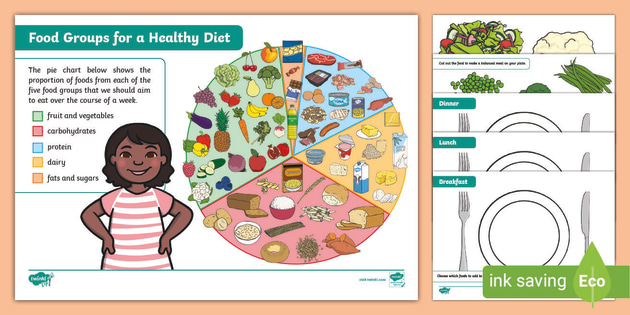Complete Guide to Healthy Eating: Crafting Nutritious Meal Plans
Introduction:
Maintaining a healthy diet is essential for overall well-being and vitality. By adopting a nutritious eating plan, you can fuel your body with the right balance of nutrients, support optimal health, and achieve your wellness goals. This comprehensive guide will provide you with valuable insights and practical tips to help you craft nutritious meal plans that promote healthy eating and nourish your body.
- Set Your Goals:
Start by defining your health and dietary goals. Whether you aim to lose weight, improve heart health, boost energy levels, or simply eat a balanced diet, having clear objectives will guide your meal planning process. Consider consulting with a healthcare professional or registered dietitian to ensure your goals align with your individual needs.
- Understand Balanced Nutrition:
A key aspect of healthy eating is understanding balanced nutrition. Your meals should include a variety of nutrients, including carbohydrates, proteins, healthy fats, vitamins, and minerals. Incorporate whole grains, lean proteins, fruits, vegetables, and dairy or dairy alternatives into your meal plans. Strive for a well-rounded plate that provides a range of nutrients to support optimal health. - Portion Control:
Portion control is crucial for achieving and maintaining a healthy weight. Pay attention to portion sizes and avoid oversized servings. Use measuring cups, a food scale, or visual cues to help you determine appropriate portion sizes. Balancing your calorie intake with your energy needs will support healthy weight management and prevent overeating.
- Plan Ahead:
Planning your meals in advance saves time, money, and helps you make healthier choices. Set aside a specific time each week to plan your meals and create a shopping list accordingly. Consider your schedule, food preferences, and available ingredients when designing your meal plan. Prepare meals and snacks in batches to have nutritious options readily available throughout the week. - Include Fruits and Vegetables:
Fruits and vegetables are rich in vitamins, minerals, and fiber, making them vital components of a healthy diet. Aim to include a variety of colors in your meals to ensure a diverse range of nutrients. Incorporate fresh produce in salads, stir-fries, smoothies, or as snacks. Experiment with different cooking methods to retain the nutritional value and flavors of these wholesome foods.
- Make Smart Protein Choices:
Protein is essential for building and repairing tissues, supporting immune function, and maintaining a healthy metabolism. Choose lean sources of protein such as poultry, fish, legumes, tofu, or low-fat dairy products. Vary your protein sources to ensure you receive a complete range of essential amino acids. Limit processed meats and opt for healthier cooking methods like grilling, baking, or steaming. - Healthy Fat Choices:
Not all fats are created equal. Include healthy fats in your meal plans to support brain function, heart health, and nutrient absorption. Choose sources like avocados, nuts, seeds, olive oil, and fatty fish. Limit saturated and trans fats found in fried foods, processed snacks, and fatty cuts of meat. Moderation and balance are key when incorporating fats into your diet. - Stay Hydrated:
Hydration is often overlooked but is crucial for overall health and well-being. Include water as a primary beverage in your meal plans. Limit sugary drinks and opt for herbal teas, infused water, or unsweetened beverages. Keep a water bottle with you to ensure you stay adequately hydrated throughout the day. Remember that hydration is essential for digestion, metabolism, and overall body function.
Conclusion:
Crafting nutritious meal plans is a proactive step towards embracing a healthy lifestyle. By setting clear goals, understanding balanced nutrition, practicing portion control, and planning your meals in advance, you can create a sustainable and nourishing eating routine. Incorporate a variety of fruits, vegetables, lean proteins, healthy fats, and stay hydrated to support optimal health. Remember, healthy eating is a lifelong journey, so be flexible, listen to your body’s needs, and enjoy the process of nourishing yourself with wholesome, delicious meals.
